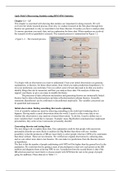Summary
Summary Introduction to Research Methodology, Andy Field
- Course
- Institution
- Book
Introduction to Research Methodology, Andy Field (2013) Discovering Statistics Using IBM SPSS Statistics, summary of the relevant chapters for the exam
[Show more]




